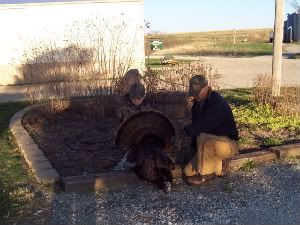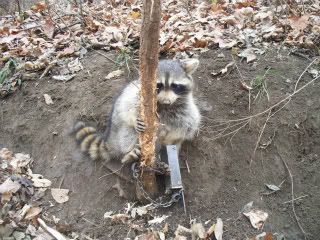TreeDog, I am not so sure that your suggested scientific method would be a valid one around biggen's deer feeder to yield any reliable, conclusive results.
There are too many operative variables in this immediate "study area," plus there is an already built-in bias to skew the results: the raccoons coming to the feeder may be so habituated and conditioned to the corn as a dependent, reliable major food source, because of its consistent availability, the presentation of alternative food/bait in that mix (no matter what it was - fish, clams, crayfish, balls of bacon grease, etc.,) complicates and confuses the issue at several levels.
As you well know, the raccoon is an opportunistic, scavenging omnivore that will eat just about anything.
The biggest margin of error that I visualize with this approach is, no matter what kind of trapping method (trap, set type or bait used,)is, maybe with the exception of a baited cage trap where the animal is not constrained, only confined: if the raccoon is caught while working a given bait set, what guarantee is there that it will eat the bait - after it is caught to find that presentation in its stomach after the fact? Granted, either way, it would have been attracted to the set. But.....,then again, it all depends.
Are you confused? I know I am, because I am not sure how to set that up yet to arrive at a definitive, measurable conclusive results.
The best thing is to forget the science, stick to the art and craft of the trapping experience, set the traps on location for whatever the target animal's name goes by, use a lure/bait that works for you to catch stuff, move to a different location and repeat the process. That ain't science, just applied trapping savvy at its best, totally void of complicated statistical analysis. The math is simple - just count the number of critters now living on your stretchers.
End of the hunt.
Jonathan




